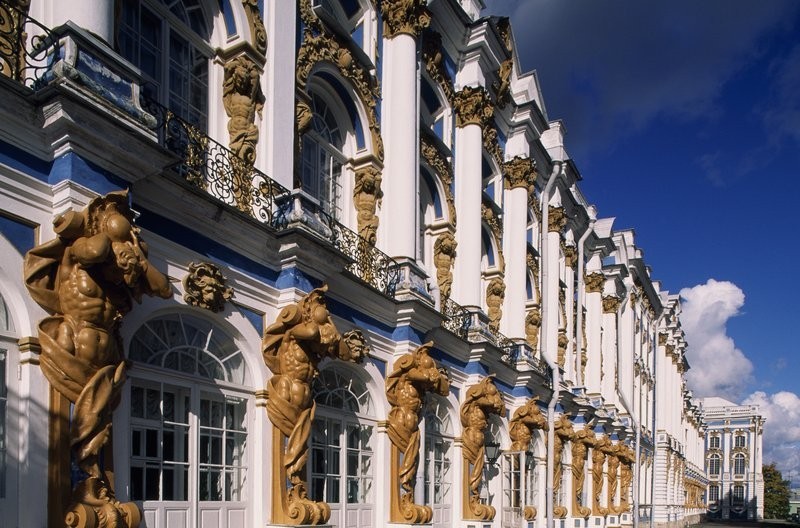Chapter 10.13: Rococo Architecture
18th-century Rococo architecture was a lighter, more graceful, yet also more elaborate version of Baroque architecture.
Rococo architecture was a lighter, more graceful, yet also more elaborate version of Baroque architecture, which was ornate and austere. While the styles were similar, there are some notable differences between Rococo and Baroque architecture, such as symmetry; Rococo emphasized the asymmetry of forms, while Baroque was the opposite. The styles, despite both being richly decorated, also had different themes; the Baroque was more serious, placing an emphasis on religion, and was often characterized by Christian themes (the Baroque began in Rome as a response to the Protestant Reformation); Rococo architecture was an 18th-century and more secular adaptation of the Baroque that was characterized by more light-hearted and jocular themes. Other elements belonging to the architectural style of Rococo include numerous curves and decorations, as well as the use of pale colors.

There are numerous examples of Rococo buildings as well as architects. Among the most famous include the Catherine Palace in Russia, the Queluz National Palace in Portugal, the Augustusburg and Falkenlust Palaces in Brühl, the Chinese House in Potsdam, the Charlottenburg Palace in Germany, as well as elements of the Château de Versailles in France. Architects who were renowned for their constructions using the style include Francesco Bartolomeo Rastrelli, an Italian architect who worked in Russia and who was noted for his lavish and opulent works, Philip de Lange, who worked in both Danish and Dutch Rococo architecture, or Matthäus Daniel Pöppelmann, who worked in the late Baroque style and who contributed to the reconstruction of the city of Dresden in Germany.
Rococo architecture also brought significant changes to the building of edifices, placing an emphasis on privacy rather than the grand public majesty of Baroque architecture, as well as improving the structure of buildings in order to create a healthier environment.
Media Attributions
- Figure 1. Facade of Catherine Palace (or Ekaterininsky Dvorets), 1752-1756, by architect Bartolomeo Francesco Rastrelli. Pushkin, near St Petersburg, Russia (Image source: Britannica ImageQuest, De Agostini / W. Buss / Universal Images Group. Rights Managed / For Educational Use Only)
Candela Citations
- Rococo: Boundless Art History. Provided by: Lumen Learning. Retrieved from: https://www.collegesidekick.com/study-guides/boundless-arthistory/rococo. License: CC BY-SA: Attribution-ShareAlike

